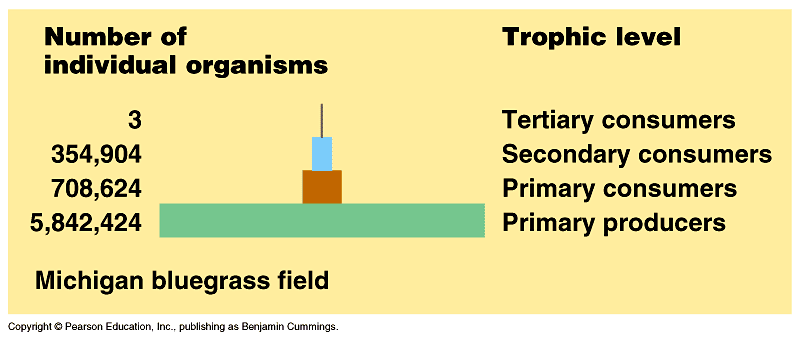Can you describe the efficiency of energy transfer between trophic levels?
1 Answer
Energy transfer between trophic levels typically follows what is referred to as the ten percent law.
Explanation:
Energy transfer between trophic levels typically follows what is referred to as the ten percent rule.
From each trophic level to the next, 90% of the starting energy is unavailable to the next trophic level because that energy is used for processes such as movement, growth, respiration, and reproduction. Some is lost through heat loss and waste. Thus, the remaining ten percent of the energy can be transferred to the next trophic level.
In the image below, if the hawk consumed the mouse, it does not consume all 100J of energy of the mouse. Instead, it gets 10% of this available energy or 10J. What happened to the other 90J? The mouse used that energy itself.

As we move up trophic levels, less and less energy is available and fewer organisms can be supported. Take the example from the image below: one field can support over five million primary producers (think photosynthetic plants) but only three tertiary consumers (think foxes or hawks). Energy efficiency decreases as we move up trophic levels.


